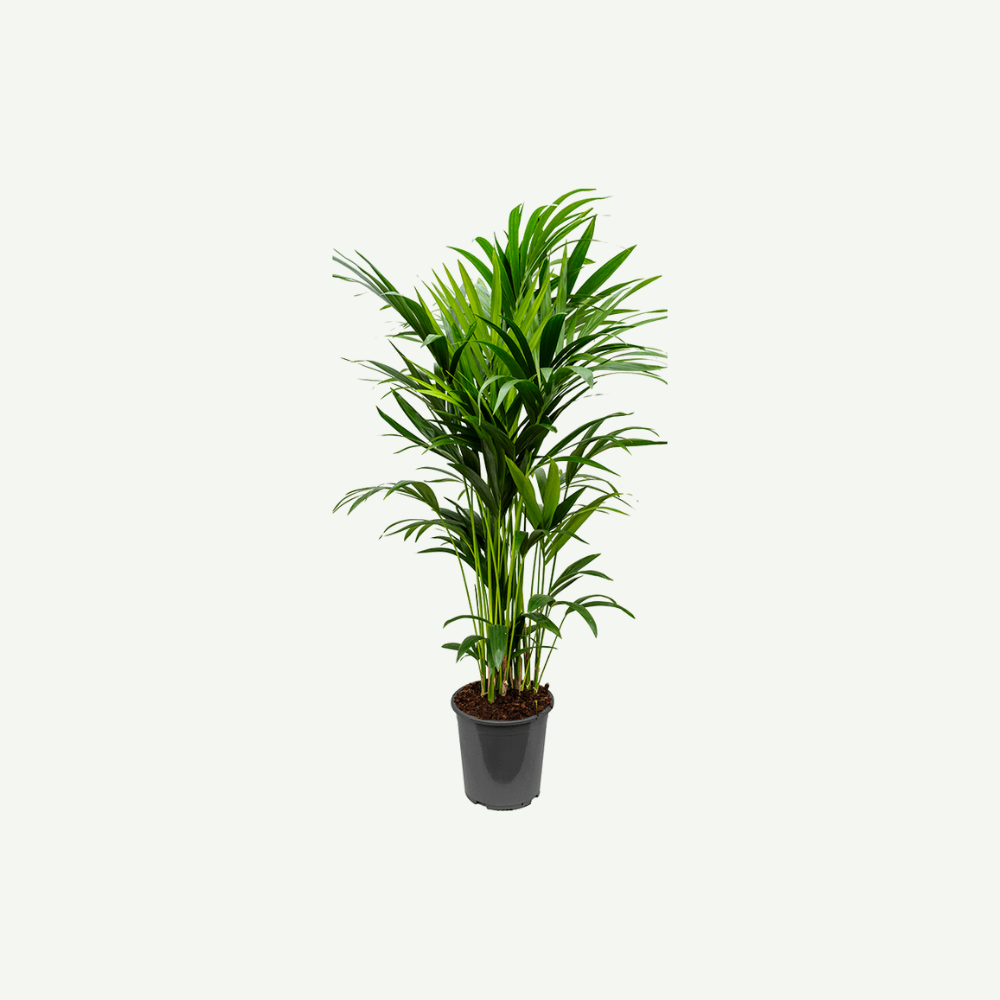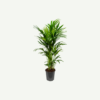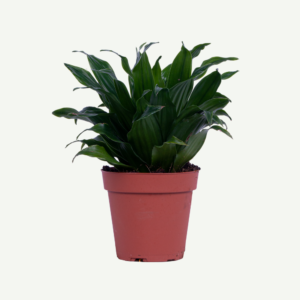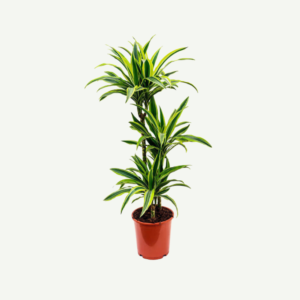Kentia Palm, scientifically known as Howea forsteriana, is a graceful and popular indoor palm tree from the Arecaceae family. Native to Lord Howe Island, off the coast of Australia, the Kentia Palm has become a beloved choice for indoor gardening due to its elegant appearance, adaptability to indoor conditions, and air-purifying qualities. It is often used in homes, offices, and other interior spaces to add a touch of tropical beauty and create a soothing, green ambiance.
Care of Kenta Palm:
Light : These Palms prefer bright, indirect light. They can tolerate lower light conditions, making them suitable for indoor environments with filtered light. Avoid placing them in direct sunlight, as this can scorch their leaves.
Temperature : These palms thrive in average room temperatures between 65°F to 75°F (18°C to 24°C). They can tolerate slightly cooler temperatures but should be protected from drafts and extreme temperature fluctuations.
Watering : Allow the top inch of the soil to dry out before watering again. These Palms prefer slightly moist soil and can tolerate slight underwatering better than overwatering. Ensure good drainage to prevent waterlogged roots.
Humidity : Kentia Palms are adaptable to average indoor humidity levels. While they can tolerate lower humidity, they will benefit from regular misting or placing a humidity tray nearby, especially in dry indoor environments.
Soil : A well-draining and slightly acidic potting mix is suitable for these Palms. A mix formulated for tropical plants or palms with added perlite or sand for drainage works well.
Fertilization : Fertilize these Palms during the active growing season (spring and summer) with a balanced, diluted liquid fertilizer. Avoid overfertilizing, as excessive nutrients can harm the plant.
Characteristics of Kentia Palm:
Leaves : The Kentia Palm features long, arching, and feathery fronds that arise from a central crownshaft. The leaves are pinnate, meaning they are arranged in feather-like formations along a central axis, giving the palm an overall graceful and airy appearance.
Height : Mature Kentia Palms can reach considerable heights indoors, typically ranging from 6 to 12 feet (1.8 to 3.7 meters) or even taller. The slow growth rate of this palm makes it suitable for indoor spaces without outgrowing its surroundings too quickly.
Growth Habit : Kentia Palms have an upright, slender growth habit, with a single slender trunk. Younger palms may have a more bushy appearance until the trunk becomes more pronounced as the plant matures.
Landscape Uses of Kentia Palm:
Shaded Garden Beds : In regions with a mild or tropical climate, you can plant these palms in shaded or partially shaded garden beds. Their elegant, arching fronds and lush appearance can add a touch of tropical charm to shaded garden areas.
Understory Plant : These palms can be used as understory plants in gardens with taller trees or shrubs. They thrive in filtered light conditions beneath taller vegetation, contributing to a lush and exotic feel in the lower layers of the garden.
Accent Plant : Use these palms as accent plants in garden beds, along walkways, or near water features. Their unique and graceful fronds can draw attention and add a touch of elegance to the landscape.
Container Gardens : Plant these palms in large pots or decorative containers to place on patios, decks, or in courtyard gardens. Their striking, arching fronds make them an eye-catching focal point in outdoor living spaces.
Tropical Garden Theme : Incorporate Kentia palms into a tropical garden theme. Combine them with other tropical plants like ferns, gingers, and colorful bromeliads to create a lush and exotic garden landscape.
Indoor/Outdoor Transition Areas : Place these palms in covered outdoor spaces like verandas, atriums, or conservatories, where they can thrive in a sheltered environment while providing a bridge between the indoor and outdoor living areas.
Educational Gardens : These palms can be used in botanical gardens, public parks, or educational institutions to educate visitors about the diversity of plant species and to showcase their graceful appearance and adaptability.
Conclusion:
When incorporating these palms into landscape or garden designs, it’s essential to consider the local climate. While they can thrive outdoors in mild and tropical regions, they are not suitable for areas with frost or extreme cold. Ensure that the planting area has well-draining soil and provides protection from strong winds and excessive sun exposure, as Kentia palms prefer indirect or dappled light and can be sensitive to harsh conditions.
Additionally, regular watering, maintaining adequate humidity, and protecting the plants from pests are key aspects of their care when used in landscape settings. With the right conditions and thoughtful placement, Kentia palms can add a touch of elegance, lushness, and a tropical ambiance to your outdoor spaces in the right climate.






